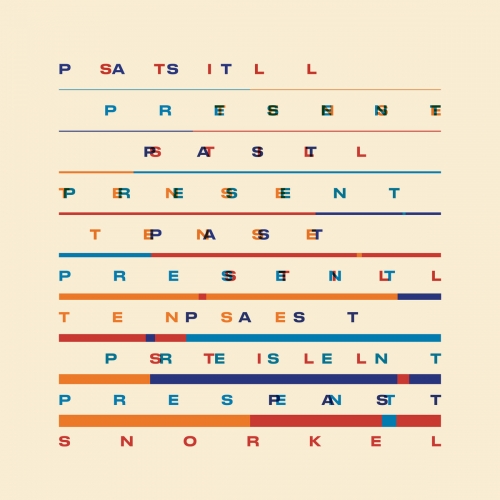Susan Kagan - Ferdinand Ries: Piano Sonatas and Sonatinas, Vol.1 (2008)

Artist: Susan Kagan
Title: Ferdinand Ries: Piano Sonatas and Sonatinas, Vol.1
Year Of Release: 2008
Label: Naxos
Genre: Classical
Quality: FLAC (image+.cue,log,scans)
Total Time: 49:55
Total Size: 179 Mb
WebSite: Album Preview
Tracklist: Title: Ferdinand Ries: Piano Sonatas and Sonatinas, Vol.1
Year Of Release: 2008
Label: Naxos
Genre: Classical
Quality: FLAC (image+.cue,log,scans)
Total Time: 49:55
Total Size: 179 Mb
WebSite: Album Preview
01. Piano Sonata in F minor, Op. 11-2- Largo con espressione - Allegro agitato [0:09:24.39]
02. Piano Sonata in F minor, Op. 11-2- Larghetto [0:04:37.33]
03. Piano Sonata in F minor, Op. 11-2- Allegro [0:05:38.65]
04. Piano Sonata in E flat major, Op. 11-1- Allegro moderato [0:10:12.61]
05. Piano Sonata in E flat major, Op. 11-1- Andante [0:04:42.60]
06. Piano Sonata in E flat major, Op. 11-1- Allegretto moderato (theme and 6 variations) [0:06:59.65]
07. Sonatina for piano in A minor, Op. 45- Allegro moderato [0:04:44.07]
08. Sonatina for piano in A minor, Op. 45- Allegretto scherzando [0:03:39.45]
Performers:
Susan Kagan – piano
Ferdinand Ries was Beethoven's student and a fine pianist who gave the premiere of his teacher's Piano Concerto No. 3 in C minor, Op. 37. His own music is clearly in Beethoven's debt, but it was popular enough to hold its own in the early nineteenth century. Ries certainly understood Beethoven's revolutionary innovations quickly enough. The two sonatas on this disc, although not published until 1817, were composed in 1807 or 1808, and they are full of attempts to replicate Beethoven's dramatic strokes. Consider the D flat major opening of the slow introduction of the Piano Sonata in F minor, Op. 11/2, and the way the implications of the unstable tonality are carried through the movement. The Piano Sonata in E flat major, Op. 11/1, is very different in mood, akin in spirit to many of Beethoven's lighter works. The serene opening movement with its noble second theme is unusually pleasant among the works by Ries that have appeared on disc thus far. The basic thematic material has a squareness that Beethoven wouldn't have tolerated, and the key to a successful performance of these works is a restrained interpretation that seeks to bring out the composer's thought processes rather than injecting a level of drama that really isn't there. This is exactly what American pianist Susan Kagan delivers. She is conventional where Ries is conventional (in the Russian-style variations that conclude the E flat sonata, and in the little Clementi-like Sonatina for piano in A minor, Op. 45), and she lets her language become more flexible and more fantasy-like in the adventurous opening sonata-form movements, and more imposing in the F minor sonata's energetic tarantella finale. The studio sound is neutral and doesn't overwhelm the music's modest virtues. Recommended for anyone interested in Beethoven's circle or in early Romanticism.

DOWNLOAD FROM ISRA.CLOUD
Susan Kagan Ferdinand Ries Piano Sonatas and Sonatinas 08 2208.rar - 179.2 MB
Susan Kagan Ferdinand Ries Piano Sonatas and Sonatinas 08 2208.rar - 179.2 MB

![Noé Sécula - A Sphere Between Other Obsessions (2025) [Hi-Res] Noé Sécula - A Sphere Between Other Obsessions (2025) [Hi-Res]](https://www.dibpic.com/uploads/posts/2025-12/1766108017_sej880ryk23va_600.jpg)

![Frank Sinatra, Count Basie - It Might As Well Be Swing (1964) [2021 SACD] Frank Sinatra, Count Basie - It Might As Well Be Swing (1964) [2021 SACD]](https://www.dibpic.com/uploads/posts/2025-12/1766090910_scan-1.jpeg)


![The Mood Mosaic - Spaghetti Groove (The Italian Psychedelic Way) (2025) [Hi-Res] The Mood Mosaic - Spaghetti Groove (The Italian Psychedelic Way) (2025) [Hi-Res]](https://www.dibpic.com/uploads/posts/2025-12/1766134183_k1k4hhixemtxa_600.jpg)

